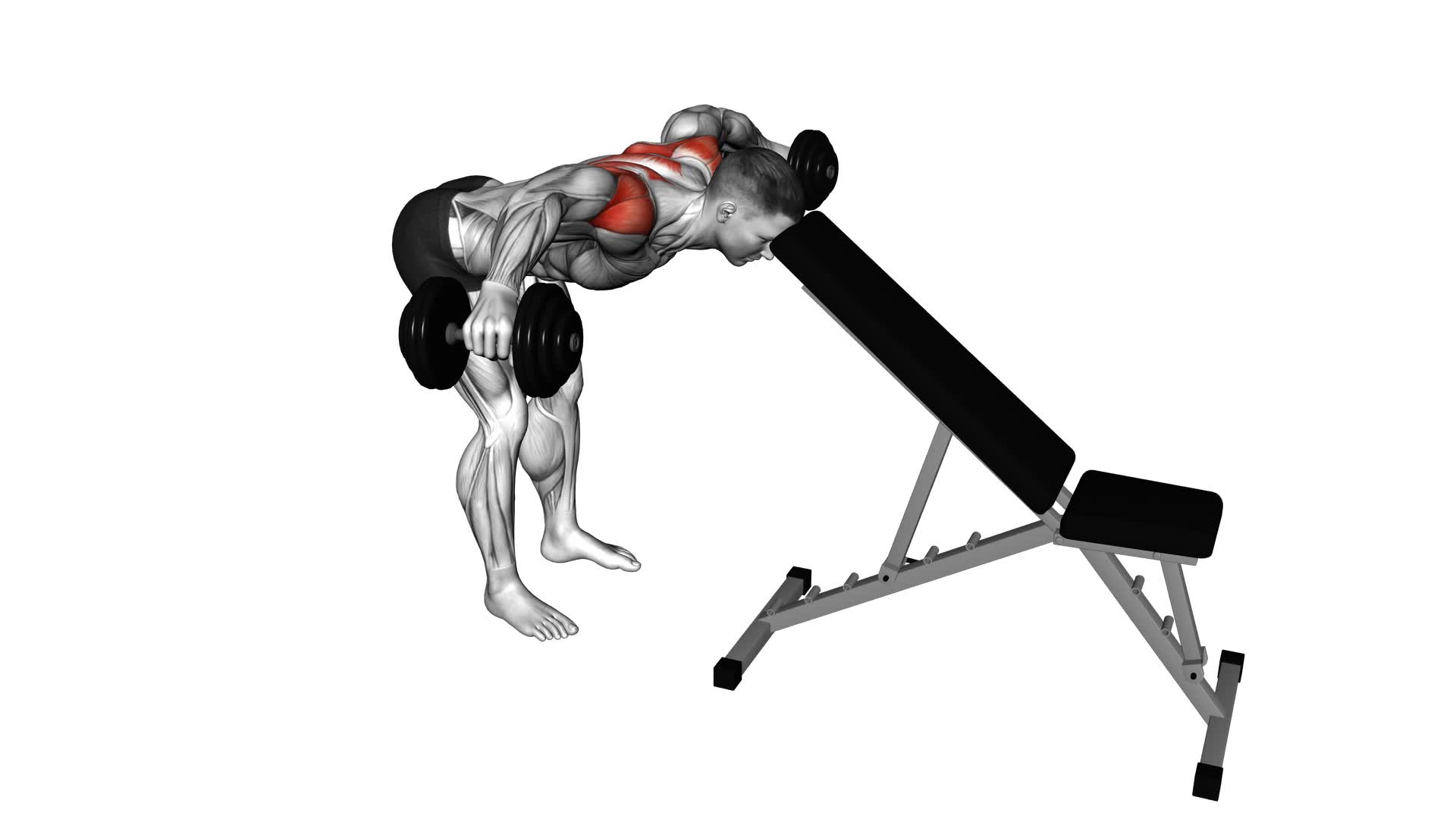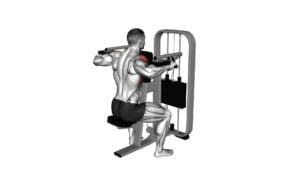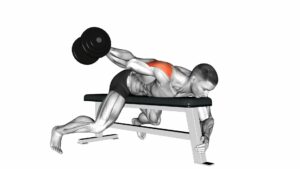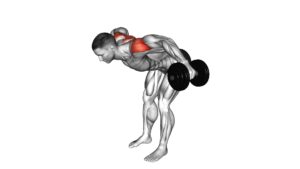Dumbbell Rear Lateral Raise (Support Head) – Video Exercise Guide & Tips

Incorporate the Dumbbell Rear Lateral Raise into your workout routine for stronger shoulder muscles.
Watch This Exercise Video
This exercise targets your rear delts and upper back, improving posture and overall upper body strength.
Watch the video guide for proper form and technique, and learn how to avoid common mistakes.
Challenge yourself with variations and modifications to keep progressing.
Get ready to support your head and enhance your fitness routine with this effective exercise.
Key Takeaways
- Targets rear delts and upper back
- Improves posture and overall upper body strength
- Enhances shoulder stability for other exercises
- Increases shoulder strength for heavier weights
Benefits of the Dumbbell Rear Lateral Raise
You can experience significant shoulder muscle growth and strength improvements by incorporating dumbbell rear lateral raises into your workout routine.
The dumbbell rear lateral raise is a highly effective exercise that targets the posterior deltoids, which are the muscles located at the back of your shoulders. By performing this exercise, you can specifically isolate and strengthen these muscles, resulting in improved posture and overall shoulder development.
When performing the dumbbell rear lateral raise, start by standing with your feet shoulder-width apart and a slight bend in your knees. Hold a dumbbell in each hand, with your palms facing your body. Keeping your back straight and your core engaged, slowly raise your arms out to the sides, squeezing your shoulder blades together. Pause for a moment at the top of the movement, then slowly lower the dumbbells back to the starting position.
Incorporating dumbbell rear lateral raises into your shoulder workout routine can have several benefits. It helps to improve shoulder stability, which is essential for performing other upper body exercises. Additionally, it can enhance your overall shoulder strength, allowing you to lift heavier weights and perform more advanced movements. Lastly, it can help to correct imbalances between the front and back of your shoulders, improving your overall shoulder symmetry.
Proper Form and Technique for the Exercise
To perform the dumbbell rear lateral raise with proper form and technique, it's important to maintain a stable and controlled movement throughout the exercise. This exercise is excellent for improving shoulder strength and targeting the rear delts.
To begin, stand tall with your feet shoulder-width apart, knees slightly bent, and a dumbbell in each hand. Keep your core engaged and your back straight. Start with your arms hanging down in front of you, palms facing your body.
As you exhale, lift the dumbbells out to the sides, leading with your elbows, until you reach shoulder height. Keep your arms slightly bent throughout the movement and avoid using momentum to swing the weights up. Hold for a brief pause at the top, then slowly lower the dumbbells back to the starting position.
Remember to maintain control and avoid any jerky or erratic movements. This exercise is most effective when performed with proper form and technique.
Now let's move on to the next section, which covers common mistakes to avoid during the exercise.
Common Mistakes to Avoid During the Exercise
Maintaining proper form and technique is crucial to avoid common mistakes during the dumbbell rear lateral raise exercise. To ensure you're performing the exercise correctly and maximizing its benefits, here are some key mistakes to avoid:
- Using momentum: Avoid swinging the weights up, as this takes away the focus from the targeted muscles and reduces the effectiveness of the exercise. Instead, lift the dumbbells in a controlled manner.
- Lifting too heavy: It's important to choose weights that allow you to maintain proper form throughout the exercise. Lifting weights that are too heavy can lead to using incorrect technique and increase the risk of injury.
- Raising the shoulders: Keep your shoulders relaxed and down throughout the movement. Shrugging the shoulders or lifting them up can put unnecessary strain on the neck and traps, taking away from the intended muscle engagement.
- Bending the elbows: Keep your arms straight throughout the exercise. Bending the elbows reduces the effectiveness of the rear lateral raise and shifts the focus away from the rear delts.
- Leaning forward: Maintain a neutral spine and avoid leaning forward excessively. Leaning forward can lead to decreased activation of the targeted muscles and strain on the lower back.
Variations and Modifications to Challenge Yourself
To further challenge yourself and enhance the effectiveness of the dumbbell rear lateral raise exercise, there are various variations and modifications you can incorporate.
If you're looking for advanced modifications, try performing the exercise while standing on one leg or on an unstable surface like a balance board or Bosu ball. These variations won't only engage your shoulder muscles but also work on your balance and core stability.
Another way to challenge yourself is by increasing the weight of the dumbbells. Gradually increase the weight as you get stronger to continue pushing your limits and building strength.
If you're looking for alternative exercises to target the same muscles, you can try the bent-over lateral raise or the cable rear delt fly.
The bent-over lateral raise is performed by bending at the hips, keeping your back straight, and lifting the dumbbells out to the sides.
The cable rear delt fly is done by attaching a handle to a low pulley, facing away from the machine, and pulling the handle back, squeezing your shoulder blades together.
By incorporating these advanced modifications and alternative exercises into your routine, you can continue challenging yourself and making progress towards your fitness goals.
Now, let's move on to the next section, which will provide you with tips for incorporating the dumbbell rear lateral raise into your workout routine.
Tips for Incorporating the Exercise Into Your Workout Routine
To effectively incorporate the dumbbell rear lateral raise into your workout routine, it's important to focus on proper form and gradually increase the weight of the dumbbells to challenge your muscles. Here are some tips for incorporating the exercise into your routine and maximizing results:
- Start with lighter weights: Begin with a weight that allows you to maintain proper form and perform the exercise with control. As you become more comfortable and confident, gradually increase the weight to continue challenging your muscles.
- Engage your core: To maximize the effectiveness of the exercise and protect your lower back, engage your core muscles throughout the movement. This will help stabilize your body and prevent any unnecessary strain.
- Maintain a slight bend in your elbows: Keeping a slight bend in your elbows will ensure that the tension stays on your shoulder muscles, rather than transferring to your elbows or forearms.
- Control the movement: Focus on a slow and controlled motion, both on the way up and on the way down. Avoid swinging or using momentum to lift the weights, as this can reduce the effectiveness of the exercise.
- Listen to your body: Pay attention to how your body feels during the exercise. If you experience any pain or discomfort, modify the movement or decrease the weight to prevent injury.
Frequently Asked Questions
How Many Sets and Reps Should I Do for the Dumbbell Rear Lateral Raise?
To get the most out of the dumbbell rear lateral raise, it's important to know how many sets and reps to do. The number of sets and reps can vary depending on your fitness goals and experience level.
Generally, it's recommended to start with 2-3 sets of 10-12 reps. As you progress, you can increase the number of sets or reps, or even try variations of the exercise to challenge your muscles in different ways.
Can I Use a Resistance Band Instead of Dumbbells for This Exercise?
Yes, you can definitely use a resistance band instead of dumbbells for the exercise. Using a resistance band offers unique benefits such as increasing muscular endurance and improving joint stability.
It also allows for a wider range of motion and targets different muscle fibers. Resistance band training is a versatile and effective way to build strength and tone your muscles.
Will Performing This Exercise Help Reduce Back Fat?
Performing the dumbbell rear lateral raise can effectively strengthen your overall back, contributing to a more toned appearance.
However, it's important to note that spot reduction of fat isn't possible.
To reduce back fat, incorporate the dumbbell rear lateral raise into a full body fat burning workout routine that includes cardio exercises and a balanced diet.
This will help you achieve overall fat loss and promote a leaner physique.
Is It Necessary to Warm up Before Doing the Dumbbell Rear Lateral Raise?
Before performing the dumbbell rear lateral raise, it's important to warm up your muscles. Warming up increases blood flow to the targeted muscles and helps prevent injury.
Incorporating this exercise into your routine has numerous benefits, such as strengthening your shoulders and upper back.
To perform the dumbbell rear lateral raise with proper form and technique, ensure you keep your back straight, engage your core, and lift the weights out to the side while supporting your head.
Can I Do This Exercise if I Have a Shoulder Injury?
If you have a shoulder injury, it's important to modify your exercises to avoid further damage. The dumbbell rear lateral raise may not be suitable for you in this case.
However, there are alternative shoulder exercises you can try that are less strenuous on the shoulder joint.
It's best to consult with a qualified professional, such as a physical therapist or trainer, who can provide you with specific modifications and exercises tailored to your injury.
Conclusion
Incorporating the dumbbell rear lateral raise into your workout routine can offer numerous benefits, including improved shoulder strength and posture.
By maintaining proper form and technique, you can maximize the effectiveness of this exercise while avoiding common mistakes.
Additionally, challenging yourself with variations and modifications can help you continue to progress and achieve your fitness goals.
Remember to consult with a professional trainer if you need guidance on incorporating this exercise into your routine.

Author
Years ago, the spark of my life’s passion ignited in my mind the moment I stepped into the local gym for the first time. The inaugural bead of perspiration, the initial endeavor, the very first surge of endorphins, and a sense of pride that washed over me post-workout marked the beginning of my deep-seated interest in strength sports, fitness, and sports nutrition. This very curiosity blossomed rapidly into a profound fascination, propelling me to earn a Master’s degree in Physical Education from the Academy of Physical Education in Krakow, followed by a Sports Manager diploma from the Jagiellonian University. My journey of growth led me to gain more specialized qualifications, such as being a certified personal trainer with a focus on sports dietetics, a lifeguard, and an instructor for wellness and corrective gymnastics. Theoretical knowledge paired seamlessly with practical experience, reinforcing my belief that the transformation of individuals under my guidance was also a reflection of my personal growth. This belief holds true even today. Each day, I strive to push the boundaries and explore new realms. These realms gently elevate me to greater heights. The unique combination of passion for my field and the continuous quest for growth fuels my drive to break new ground.







